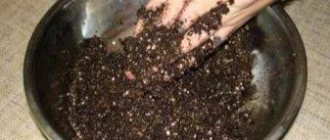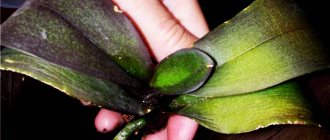Gardeners grow many plants, and among them is foxglove. This is an unpretentious and long-flowering ornamental biennial. It has also become widespread in floristry thanks to its unusual multi-flowered pyramidal inflorescences. Growing this crop on your own plot is easy if you follow certain rules.
Description of foxglove purpurea
We are talking about a plant that reaches 30–120 cm in height. Thimble grass has evenly spaced foliage that is dark green and velvety with glandular hairs. Below they are wide and long, ovoid and pointed, and the upper ones are 2 times smaller - short petiolate and sessile. In June-July, the plant throws up a long pyramidal brush, on which ruby and, less often, white corollas are located.
Below on the inner surface there is a spotted decoration. The opening of the corolla tube is almost completely covered by multiple protruding hairs. The stamens are bare, but the ovary is characterized by the presence of glandular pubescence. At the end of the season, a capsule with small brown seeds ripens. The plant is widespread in European countries and North Africa.
Foxglove purpurea - characteristics
Among the characteristic features of this plant are:
- Decorative use is widespread in gardening and floristry.
- Biennial.
- Belongs to the Plantain family.
- Foxglove purpurea has flowers collected in a pyramidal oblong raceme.
- Covered with regular and glandular hairs.
- Unpretentious and frost-resistant.
- It is used as a medicinal raw material for cardiac and other diseases.
Is foxglove purple a poisonous plant or not?
The plant contains cardiotonic glycosides, which give the leaves and stems a bitter taste. When used correctly and in dosage, the flower can be beneficial, but if used in excess, it will act as a poison. The concentration of such substances is strictly individual and depends on the place of growth, weather conditions, soil quality and other factors. According to experts, the poisonous foxglove purpurea can be fatal to humans in a dose of 2-3 dried leaves. You need to prepare decoctions and infusions from it yourself with great care.
Chemical composition
The aerial part of the plant contains steroidal glycosides (digitoxin, β-acetyldigitoxin, digitonin, gitoxin, gitonin), as well as a number of genoin glycosides (purpureaglycosides A and B), which are converted into primary (secondary) glycosides during the drying and storage of digitalis purpurea. In addition, the plant contains a number of organic acids, saponins, flavonoids, choline and other compounds.
We recommend reading: Irga - useful properties, contraindications, what is prepared from berries
Varieties of foxglove purpurea
There are many varieties of this plant that are very popular among gardeners. These include:
- Foxglove purple Dalmatian White
. Named for its white buds with small purple spots. Grows 80–110 cm in height. It has straight, strong stems, oblong, juicy, green foliage. The flowers look like bells that appear in June-August. This plant has strong immunity and drought resistance. - Foxglove purpurea Excelsior
. This species is the tallest. It reaches 150 cm in height, standing out in the flowerbed among other ornamental plants. The buds have a hue ranging from purple to lilac and pink. This biennial is frost-resistant and tolerates cold and snowy winters. - Red dwarf
. This variety fully justifies its name, as it does not exceed 35 cm in height. It is named red due to its bright, richly colored bloody buds. Its inflorescences are large and remarkable. Prefers well-lit, sunny places.
Types of foxgloves with photos
In total, about 35 varieties of digitalis have been described, six of which can be found growing in the wild nature of Russia. They grow mainly in the Caucasus, throughout the European part and in the South-West of Siberia.
Favorite places of growth are forest edges and clearings; foxglove is often found in dry meadows.
Foxglove purpurea
The most popular perennial of the genus, which is often grown as a biennial. Erect shoots with short pubescence practically do not branch; they can reach a height of one and a half meters. A leaf rosette is formed in the root zone. The lower leaves are petiolate, with an alternate arrangement. The upper ones sit on shoots without petioles. Sufficiently large buds form a large inflorescence, which can reach a meter in length. The base color is purple, hot pink or cream; white varieties are much less common.
This variety has several subspecies, such as gloxinia, excelsior or peloric. On their basis, many decorative hybrids with lilac, raspberry-burgundy and other colors have been bred.
Foxglove grandiflora
Often found in meadows and forest edges in Europe and southern Siberia. A medium-sized variety, not exceeding a height of 1 m. The leaf blades are elongated, the inflorescences are pale yellow and have slight pubescence.
Foxglove rusty
The color of the buds of this variety is uneven. An orange rusty pattern is smeared across the yellow background inside the corolla. The outer color is more uniform. In addition to the basic palette, there may be other colors that vary greatly depending on the variety. The flowers are smaller than previous varieties, but have a more attractive appearance and vaguely resemble an orchid.
Foxglove woolly
A poorly decorative variety, of interest only as a medicinal plant. It is a low, single stem covered with thick down and the same pubescent leaves and buds. The flowers are pale yellowish, small, inconspicuous.
Foxglove yellow
It produces tall peduncles up to 1 m and is distinguished by the complete absence of pubescence on all parts of the plant. The flowers are small, pale yellow, medium decorative.
Digitalis ciliata
Compact appearance with short fluffy shoots not exceeding 10 cm and serrated lance-shaped foliage. The bells are white-yellowish and unattractive.
Foxglove parviflora
A wild variety that grows mainly in warm European countries. Shoots without branches end in tall peduncles with buds of brown-chocolate color.
Not only the woolly variety is of interest as a medicinal plant. The leaves of most foxglove species contain glycosides, which is why they are widely used in folk and traditional medicine.
Where to plant foxgloves?
This unpretentious plant can be planted even where other crops begin to wither. The sunniest and brightly lit areas are the favorite place of foxglove purple. She won't mind even a little shade. Under fruit trees and various shrubs, red foxglove does not feel very comfortable. It is too dark and damp here, and falling leaves will cover the plantings and contribute to rotting. The crop is not planted in wetlands, where groundwater lies close.
Foxglove purpurea - planting
When the soil in the garden has warmed up well and the threat of frost has passed, the foxglove can be planted for permanent residence. This procedure is carried out in several stages:
- The area should be dug up.
- Add compost at the rate of 4–5 kg per m².
- Make holes in the ground based on the size of the rhizome. The distance between them should be 20–25 cm.
- Handle digitalis purpurea along with a lump of earth.
- Cover with soil and compact.
- Water the plants generously.
Dosage forms of digitalis purpurea, method of administration and dosage
Powder from leaves of foxglove (Pulvis foliorum digitalis). Crushed leaves with stems, green powder. Activity 50–66 ICE per 1 g. Prescribed orally for adults, 0.05–0.1 g per dose 2–3 times a day. It can also be prescribed in suppositories.
Available in the form of powder and tablets containing 0.05 g of digitalis powder. Store the powder with caution (list B) in small, filled to the top, tightly sealed and paraffin-lined orange glass jars. The activity of the powder is indicated on each jar (number of units in 1 g).
An infusion of foxglove leaves (Infusum foliorum Digitalis) is prepared at the rate of 0.5–1 g of leaves per 180 ml of water. Prescribed to adults: 1 tablespoon 3-4 times a day. For children, prepare an infusion of 0.1–0.4 g per 100 ml; give 1 teaspoon - 1 dessert spoon 3-4 times a day. The infusion can also be prescribed in enemas.
The preparations Digitoxin (Digitoxinum), Gitoxin (Gitoxinum), Cordigitum (Gordigitum) are also made from digitalis purpurea.
Important to remember! All digitalis preparations can be taken only as prescribed by a doctor and under his mandatory supervision.
Source
Foxglove purpurea - care
Caring for crops involves the following activities:
- Foxglove purple needs timely loosening of the soil and watering.
- Wilted buds need to be removed.
- If you want to collect the seeds of the inflorescence, you need to tie it with gauze.
- Fertilize with fertilizers.
- The Digitalis plant blooms profusely if weeds are removed along with the roots in time.
- Mulching is necessary during dry summers. For this purpose, peat or sawdust is used, covering the ground with a layer of 1 cm.
- Cover the roots that appear on the surface with soil.
- Overgrown specimens should be thinned out.
Watering foxgloves
High humidity of both the substrate and the environment is detrimental to the plant. As a result, the roots may begin to rot, resulting in various fungal diseases. Foxglove purpurea is easy to grow and this crop is unpretentious, but the opposite situation, when watering is completely forgotten, is also undesirable. Moderate hydration is what you need. When the soil dries well, it can be watered, but not flooded. Under such conditions, the release of inflorescences will be strong and abundant.
Feeding foxgloves
Foxglove purpurea likes to feed regularly. Twice a season you can apply any complex mineral fertilizer, diluting it in water according to the instructions. The soil is enriched with the drug along with watering. Foxglove purpurea responds well to feeding with “Hero” universal, “Solution”, “Biona”, “Stimulin” and others. Spraying fertilizers on leaves and inflorescences is not recommended, as this can damage the delicate petals.
Diseases and pests
Powdery mildew. The fungus spreads at high speed through the air, as well as through irrigation water and through tools. The affected plant turns yellow, shrivels and dies. At the first signs of the disease, you should get rid of the affected parts, then immediately treat digitalis with a fungicide. If the disease was not eliminated in the initial stages, then in further stages the plant cannot be saved.
Root rot. Foxgloves affected by this disease should be destroyed to stop further spread. Then the place where the diseased plant grew must be treated with a fungicide.
Leaf spotting. Occurs on leaves and stems as a result of the activity of various pathogens. This is a symptom of the death of the affected area. Both young and mature plants are susceptible to the disease. The disease leads to premature leaf fall, drying out and deformation; weakens the immunity of digitalis.
Insect pests. The plant is susceptible to attacks by various species of aphids, which are carriers of various infections. The pest can be easily removed by treating the foxglove with an insecticide.
Foxglove purpurea - reproduction
Reproduction of the crop occurs in two ways - by seeds, including seedlings and non-seedlings, and by root shoots. Here's how to grow seedlings:
- Soak the seeds in water for 7 days, changing it every 7 hours.
- Fill the prepared containers with substrate.
- Spread the seeds on the surface.
- Sprinkle with a thin layer of sand.
- Moisturize.
- Cover the container with film and place it in a warm place with bright and diffuse lighting.
- The digitalis flower will sprout in about 2 weeks.
- When the first true leaf blades form, the plants need to be pruned.
- 15 days before planting in open ground, harden it by placing it on the balcony for a while and gradually increasing the period of exposure to the cold.
Gardeners often use the seedless method, sowing seeds directly into an open area:
- Dig up the earth.
- Level the soil surface with a rake.
- Make shallow rows so that the planting depth is not more than 1–2 cm.
- The distance between rows should be 25–30 cm.
- Distribute the seeds.
- Lightly sprinkle with soil.
- Protect with some covering material and wait for the shoots to appear, caring for them.
This is how the foxglove flower reproduces by lateral shoots:
- Wait until young shoots appear 2–3 weeks after flowering.
- When they grow 7–8 leaves, they should be carefully separated from the main plant along with the root.
- Choose a place, dig a hole and plant it, covering it with soil.
- Water generously.
- By the beginning of cold weather, the plant will have time to take root and bloom the next year.
Foxglove purpurea in landscape design
Such an unusual plant in appearance could not help but attract the attention of gardeners and landscape design organizers. White foxglove purpurea and other varieties are often used for:
- Decorating unsightly walls and fences
. A tall plant hides all the shortcomings of buildings, diverting attention from unattractive elements. - To create a background in linear flower beds and mixborders
. Its pyramidal inflorescences-tassels can complement any ensemble. They look great in the company of roses, peonies, and valerian. - Framing paths, borders and the like
. This especially applies to low-growing plants, but tall ones are also chosen to organize flower beds on both sides of the path.











